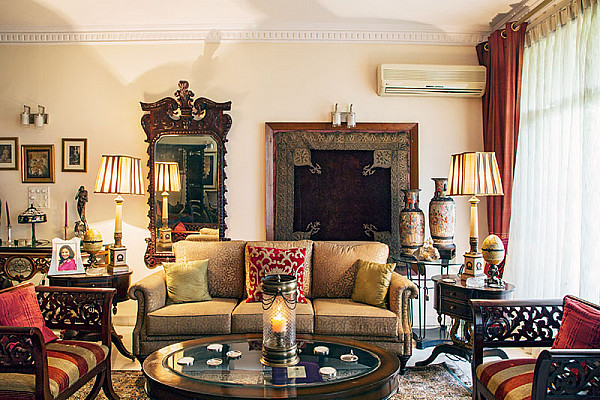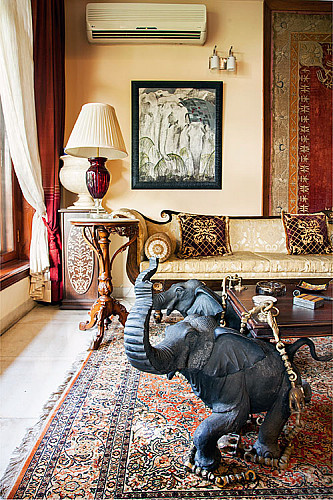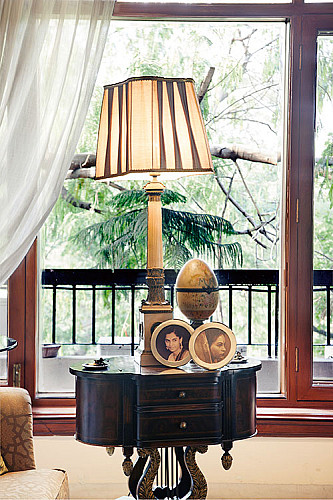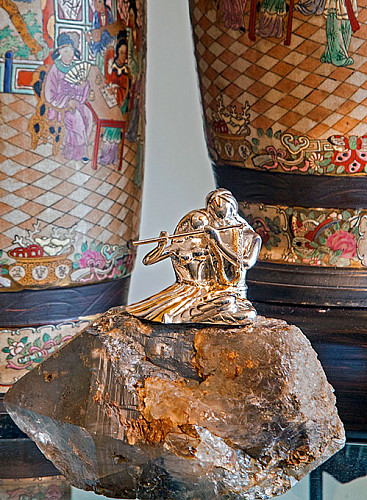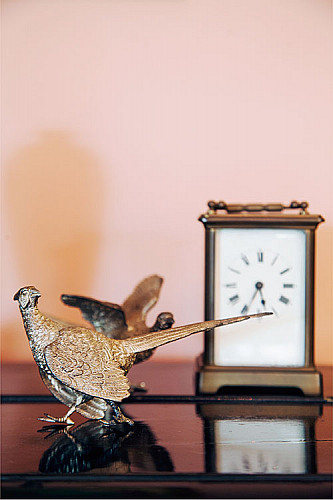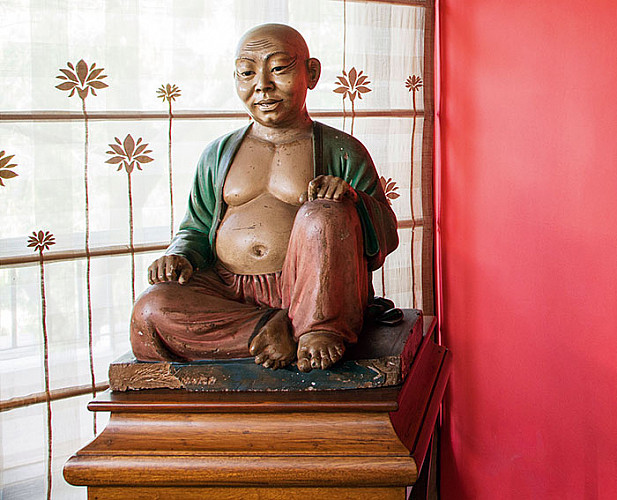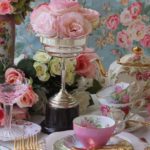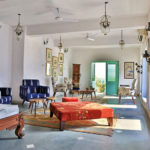Archana Kumari Singh: A Royal in Residence
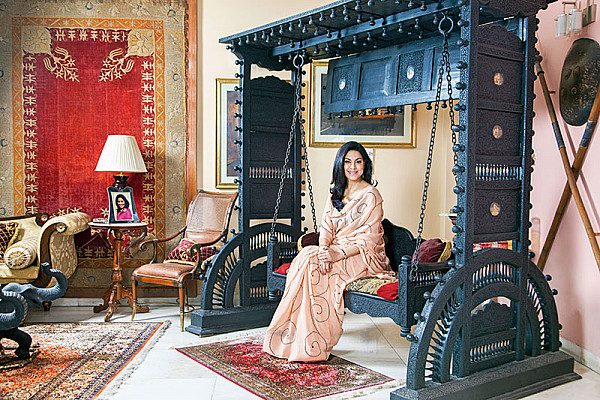
Circumventing the busy roadways of the capital on a sultry afternoon a few weeks ago, I am headed towards upscale GK. After turning into one of its quieter by-lanes, my vehicle halts before the gated building that sports the address which is my appointed destination for the meeting. The durwan guides me to an upper storey and I walk up the steps to the home of the royal in residence, Archana Kumari Singh. Ringing the doorbell, I hear the loud barking of two dogs who hurtle towards the entrance as soon as I step in.
I find myself in a comfortable space that is replete with a plethora of large and small artefacts. My eye is drawn to the huge swing that stands invitingly on one side. At another spot is a piano, silent for the moment — and the erstwhile princess, who is also president of Frazer and Haws, walks in, clad in a soft chiffon sari, her pallu draped elegantly across her shoulders. Delicate pearls glisten around her neck.
Earlier a writer and the editor of a magazine, Archana joined Frazer and Haws when she reinvented her professional life. Her role as president appealed to her inner sensibilities. She emphasises, “Frazer and Haws is the workshop of Hennell, opened by John Frazer and Edward Haws in 1869. Frazer and Haws, and Hennell of Bond Street, have been designing the most exquisite silver collectibles and precious jewellery for over 250 years. I realised that the ideologies I grew up with matched beautifully with the vintage ethos of the company. Also, members of different royal families in Europe bought from them. The concept of corporate social responsibility existed right from the very beginning at Frazer and Haws. I decided that if I had to be the face of any company in India, it would have to be this. My background was similar to what the company embodied; the connection and sync in mindset was automatic.”
Her Delhi abode, a home that she has nurtured with her husband, Kanwar Ranjay Singh of Badnore (in Rajasthan), is comparatively much smaller than her huge childhood home in Pratapgarh in Uttar Pradesh. It displays ample traces of her personal and professional leanings. Archana points out, “The term ‘space’ is entirely relative. To me, it is just an empty expanse waiting to be embraced. And when you imbue it with elements of your own sensibilities, it embraces you back. And that is the very essence of a personal space.”
Archana’s earliest memory of a home is of a large fort which she remembers was always filled with family — immediate and extended. She rewinds, “There was constant laughter — as also rules with strict codes of conduct. Each of us had our own personal favourite corners, and there were plenty of unused spaces — a rarity now. Outdoors, it was largely a male domain but we had our moments that were liberating and satisfying too. We looked forward to festivals as the entire family congregated for a few days and the onus would be on my parents (since they were the eldest in the family) to make sure that everyone was made to feel special. The participation of the local people was of great importance too — food and music were integral and our own court singers would arrive for any special occasion; the khansama would cook up a storm. In hindsight, I realise what efforts went into making each day an ‘event’!”
She admits that the biggest luxury element — and one that she does tend to miss in Delhi — is the unimaginable space! Archana says, “In the Pratapgarh house, there were large ceilings, huge rooms, big windows, courtyards and gardens, and bathrooms that are perhaps the size of a current Mumbai or Manhattan flat! Each courtyard was used for a different purpose. While one had a large aviary, the other had an enclosure for a deer and a blackbuck. We had all kinds of pets including a monkey and tiger cubs — when my mother got married, she brought with her a bear! On winter afternoons, al fresco meals were organised in a private courtyard every day and on summer nights, we abandoned our bedrooms to sleep on the highest terrace.”
The daughter of Raja Abhay Pratap Singh adds, “I learnt a lot from my father who was a connoisseur of good music, literature and food, and also from my mother who had a creative bent of mind. We were brought up with solid values and were extremely grounded.”
To Archana, being a royal has made her the woman she is. “It meant conducting ourselves with diginity and responsibility at all times,” she recalls. “Values like humility, compassion and generosity were all imbibed in us from our childhood. Our generation has changed and adapted phenomenally to modern dictates and contemporary living. Most of us dwell in bigger cities even while we maintain our ancestral homes. We live and love with age-old value systems and a sense of integrity that sets us apart. Our past is our USP; we cherish it and allow it to constantly lead us forward. And the influences of my thinking have been many — that was the advantage of growing up in a big family. I have had the privilege of being exposed to a refined, impeccable personal style, conduct and living.”
Marriage brought with it a distinct change in locale for it took the erstwhile princess to the capital of India. Archana states, “Though I got married into a similar background, living in Delhi is a stark contrast to our ancestral homes. Adapting to smaller spaces and a fast-paced career option is a leveller. Life in a metro has its fair share of trials and having spent a sheltered childhood, it was not easy. But everything has been a constant learning curve and the strength to straddle the dichotomy of two worlds comes from our upbringing. Moving to Delhi was exhilarating as I loved the anonymity. There were no tags and the new no-identity made me feel so free! The slate was clean; I could pen my own individuality. And that’s what I did. My real journey began only when I moved from a fort to a flat!”
Over the years, Archana has given her home its unique identity. For, she believes, “Each space has its own personality. In any home, furniture is the dominant element — and, for both, me and my husband, it has to have the vintage feel. In fact, most rooms carry a blast-from-the-past sentiment. It’s something that we grew up with and is hard to shake off. I have no affinity towards contemporary styling and artefacts. Clean lines don’t speak to me. I love extravagant detailing, the intricacies of carving, the feel of rich woods and fabrics.”
It is no wonder then that her residence has an obvious mix of vintage details and silverware — as both stem from integral parts of her life. As we walk around the hall and dining room, Archana states, “I can never shake off the old-world in me! I am instantly drawn to antiques or their replicas and I love silver! It is an outstanding metal that defines luxury. We grew up with so much of silver around us — while the living areas had decorative silver, a mundane space like the bathroom too had plenty of utility silver. My home is dotted with old and new silverware, with most of the new collection being from Frazer and Haws.”
Archana has her favourite spot in her home, where she spends time, often over her morning cuppa, soon after waking up each day. She points it out to me, saying, “It overlooks the large park near our home. I can sit for hours on this delicate-legged chair and look out of the bay window and gaze endlessly at the greenery outside.”
When I ask her what she misses the most of her home in the fort, Archana gets almost poetic. She states, “I miss the sights, sounds and the smells — greenery that stretches to as far as the eye can see, the cacophony of mornings as the village life explodes into action, the sight of smoke from homes in the far horizon as evening meals are cooked, the sound of nesting birds at dusk, the lone peacock dancing with abandon even as his audience remains a row of crows, the cicadas that keep up a constant chirp at nights, the star-studded sky that makes you yearn to grab a fistful for a crown and the unbelievable ‘time’ that keeps the slowest rhythm!”
As the years passed, Archana filled her Delhi home with a variety of knick-knacks and beautiful items, sourced from various shops and boutiques. She says, “Some are genuinely old and some we found in and around Delhi. Some furniture pieces are from Villa d’Este and some were even created at our Frazer and Haws workshop in New Delhi. One of the centre tables features four elephants with an antique jhoola plank on it. These elephants were styled like one of our silver elephant bookends. A new larger master model was made and then they were cast in resin.”
There is an eclectic mix in the different rooms, each of which has its own distinct hue. There isn’t any particular colour palette, but white dominates, even though every room has a coloured wall — the drawing room has shades of apricot and old rose, the foyer has mocha, the living room has a dusty blue and the dining room has a bold scarlet! As we check out each, Archana talks about individual finds that have made her home special as she travelled across the globe. She says, “I can tell you tales of several. A significant piece is an ancient Chinese pillow made of wood that was carried by travellers and used wherever the place of rest was chosen. For us a pillow is a soft cradle for our head, but this one is a hard small piece, decorated on the sides and with a slight curve where the head could fit. It’s a revelation of the tough times that existed and makes us realise how lucky we are to be living in more evolved times.”
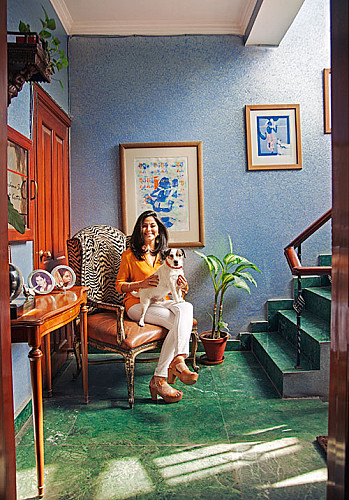
Artworks — both miniatures and huge creations — are found aplenty on the walls and her choices reflect her favourites. Predominant here she says, “are artists like Arun Pore and his two distinct styles and Subir Dey who is adept at watercolours as well as oils. A large painting of a Kolkata street by Dey is on the red wall. We also have an array of miniatures that belong to my husband’s ancestral place, Badnore in Rajasthan. Each of these is a depiction of court life and has been created with natural colours made from pigments of plants and vegetables — and that is the reason why the colours look absolutely fresh even after decades and generations.”
I ask her what, according to her, are the elements that go into making a home beautiful. Archana believes, “It’s the balance in everything, be it the colours, the style of furniture, drapes, wall art or decorations. The heavy pieces must be moderated sensibly; otherwise everything looks disproportionate and unappealing. And that is something that I have tried to achieve here.”
She loves her home as it is and this is evident when she states, “Given a chance I would not change it ever, just re-do bits and elements. There’s a particular sofa in the living room that has seen several changes of upholstery because my dogs, for some reason, hide their toys under it and then keep tugging at the fabric, which tears ever so often.”
Archana’s lifestyle — like almost every aspect of her life — is a seamless blend of different ‘times’. Later, as she poses for our camera, she is elegantly regal in a nude-coloured chiffon sari with delicate black sequin embroidery, also showing her more contemporary side in white True Religion jeans, a Zara shirt and feet clad in beige handmade Italian leather heels. She summarises her inner essence, and what drives her and her living, best: “For me the inspiration is rooted in the past. The adaptation is often modern.”
Related posts from Verve:
Verve Trending
Sorry. No data so far.
us on Facebook to stay updated with the latest trends

